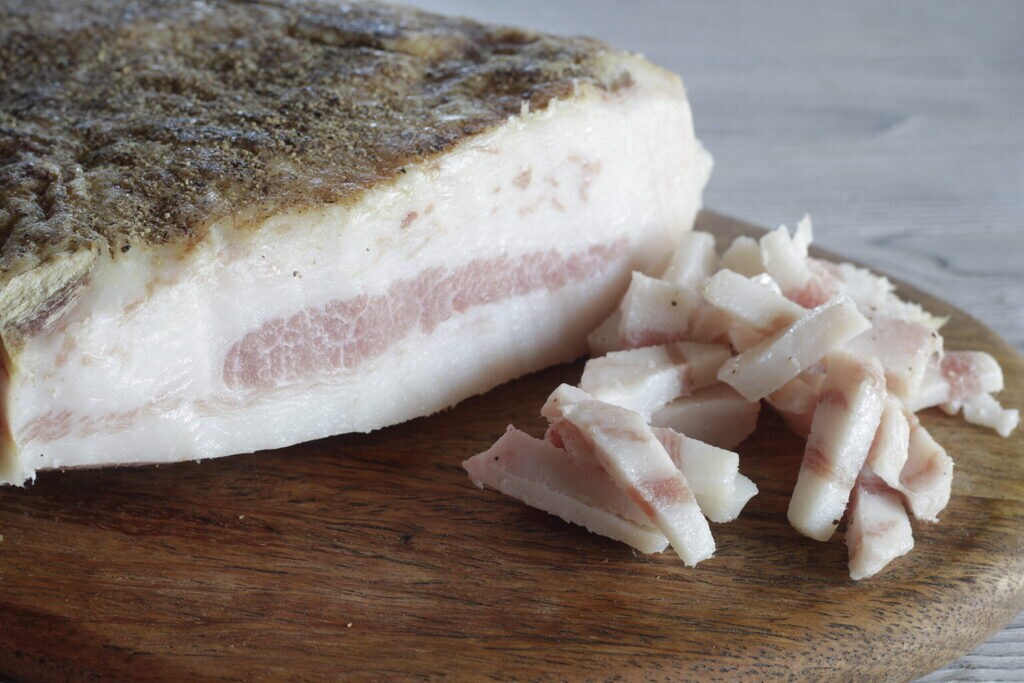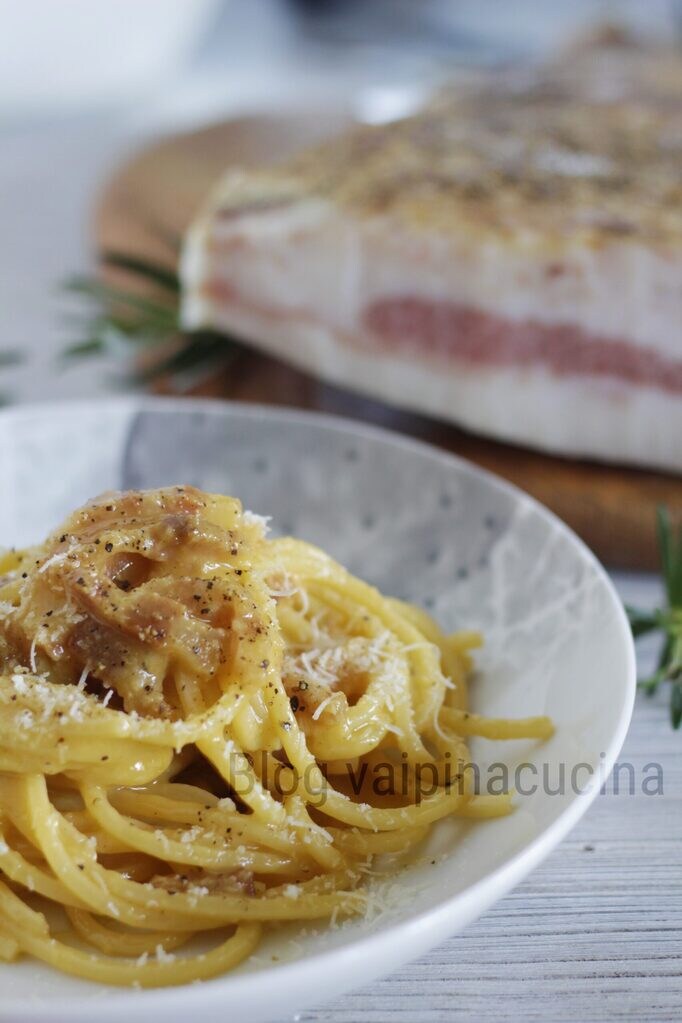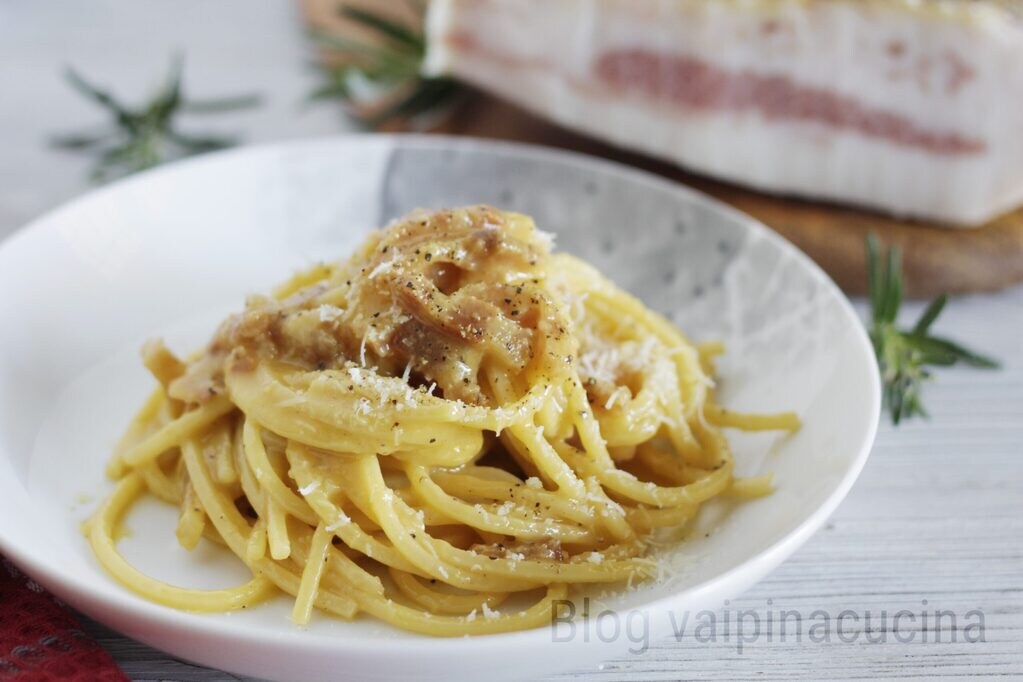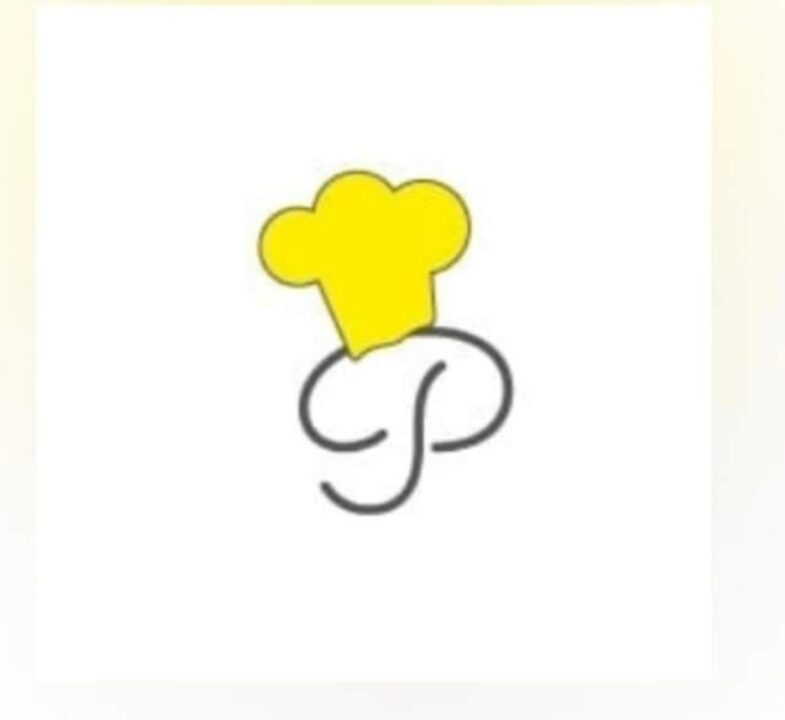Carbonara, a very simple and generally well-liked recipe. Guanciale plays a truly important and fundamental role in Roman cuisine with its strong flavor and texture. Many replace it with pancetta, but not in the old and dated Roman taverns. The origins of this dish are still uncertain today, although many are sure of its origin in Lazio. With the liberation of Rome, American soldiers who had brought bacon with them cooked using local products like eggs and pasta. However, it was an Italian in Rome who refined the recipe that we find on our tables today. Carbonara.

- Difficulty: Very Easy
- Cost: Inexpensive
- Preparation time: 15 Minutes
- Portions: 2
- Cooking methods: Boiling
- Cuisine: Italian
- Seasonality: All Seasons, Spring
- Energy 496.61 (Kcal)
- Carbohydrates 27.93 (g) of which sugars 0.51 (g)
- Proteins 14.41 (g)
- Fat 35.90 (g) of which saturated 14.04 (g)of which unsaturated 18.14 (g)
- Fibers 1.75 (g)
- Sodium 2,229.32 (mg)
Indicative values for a portion of 310 g processed in an automated way starting from the nutritional information available on the CREA* and FoodData Central** databases. It is not food and / or nutritional advice.
* CREATES Food and Nutrition Research Center: https://www.crea.gov.it/alimenti-e-nutrizione https://www.alimentinutrizione.it ** U.S. Department of Agriculture, Agricultural Research Service. FoodData Central, 2019. https://fdc.nal.usda.gov
Ingredients needed to make Carbonara
- 6.35 oz spaghettoni
- 2.82 oz guanciale
- 1.06 oz pecorino romano
- 1 egg
- 0.21 oz salt
- 1 pinch pepper
Tools needed to make Carbonara
- Frying Pan
- Pot
- Cutting Board
- Plate
Steps required to make Carbonara
For two people, cook the guanciale cut into small pieces in a pan over low heat until it becomes crispy. Meanwhile, beat the egg in a plate with 3 tablespoons of pecorino romano, a pinch of salt, and pepper. Cook the spaghettoni until al dente, drain them, and immediately add them to the guanciale and egg. Serve them with a sprinkle of pecorino.



